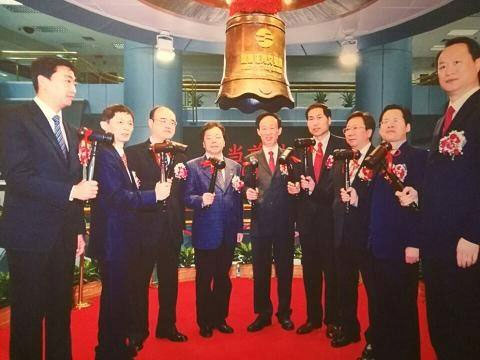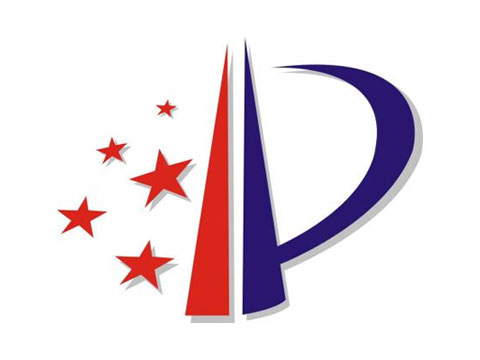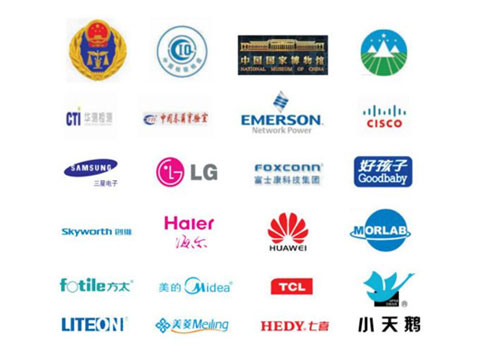 Notice:
Notice:TECHNOLOGY
Recommend
Contact US
TEL86 136 1622 3382
hotline800-9993-818
addressNo. 1888, Zhonghuayuan West Road, Kunshan City, Jiangsu Province, 22/F, Taohuayuan Science and Technology Innovation Park, Furong East Road, Songgang, Bao'an District, Shenzhen, China
Technical articles HOME >> TECHNOLOGY >> Technical articles
There are 66 standards for dairy products in China, including product standards and inspection standards. In the product standard, there is a definite limit on the content of some "heavy metal pollutants" in dairy products, and a series of national standards for testing the content of heavy metal pollutants have been issued in accordance with the requirements.
The national standard GB 2762-2005 "the limit of contaminants in food" requirements for the limit of mercury in fresh milk is 0.01mg/kg, the limit of chromium element is 0.3 mg/kg, the limit of lead and arsenic is 0.05 mg/kg, and the limit of selenium element is 0.03 mg/kg. The national standard GB 2762-2005 "the limit of contaminants in food" requirements for arsenic in milk powder is 0.25 mg/kg, the limit of chromium element is 2 mg/kg, the limit of selenium element is 0.15 mg/kg, and the limit of lead (infant formula powder) element is 0.02 mg/kg. GB 19644-2010 "food safety national standard milk powder", GB 19301-2010 "food safety national standard raw milk", "heavy metal pollutants" in accordance with the limit of GB 2762.
The test of the content of "heavy metal pollutants" in dairy products reference GB/T 5009.12 "determination of lead in food", GB/T 5009.17 "determination of total mercury and organic mercury in food", GB/T 5009.11 "determination of total arsenic and inorganic arsenic in food", GB/T 5009.123 "determination of chromium in food", GB /T 5009.93 "determination of selenium in food" and other countries Home standard.
According to the national inspection standards, Tian Rui can detect the "heavy metal pollutants" in dairy products based on "atomic fluorescence spectrometer" (AFS200 Series), "graphite furnace atomic absorption spectrometer" (AAS8000) and "inductively coupled plasma mass spectrometer" (ICPMS2000) based on the independent research and development of Tian Rui.
The experimental data show that the above analytical instruments can fully meet the requirements of the national standard for dairy products.
The "AFS200 series atomic fluorescence spectrometer" can accurately detect arsenic, selenium, lead and mercury in dairy products. The detection limit of instrumental analysis is low, and has the advantages of quick and easy operation.
The "ICP-MS2000" is characterized by high sensitivity and low detection limit, which can be used for the accurate and rapid analysis of lead, selenium, arsenic, chromium, mercury and other heavy metals in dairy products.
The "AAS8000 graphite furnace atomic absorption spectrometer" has the characteristics of high sensitivity and low detection limit, which can be used to accurately analyze the heavy metal pollutants such as lead and chromium in dairy products.
Detailed inspection plan, please call Tian Rui customer service hotline: 800-9993-800.





Skyray Analytical Testing Instrument Research Institute has three centers, namely "analysis instrument research and development center", "physiochemical analysis and testing center" and "analysis and testing technology application development center."Tianrui Analytical Instruments Co., Ltd. recently formed a staff of 1 academician, 11 Ph.D., 13 senior engineers, 17 masters, and 50 undergraduate R&D personnel from famous universities.

Mr. Liu Zhaogui: graduate student in nuclear physics from Tsinghua University. It has been appraised as the outstanding entrepreneur of Jiangsu Province, the young and middle-aged experts who have outstanding contribution in Jiangsu Province, the first science and Technology Minister of Kunshan, and the national science and technology ministry "scientific and technological innovation and entrepreneurial talent". With the approval of the State Council, the special allowance of the State Council is enjoyed.

Dr. Yao graduated from the Department of Engineering Physics of Tsinghua University with a Ph.D. in nuclear electronics. He has been engaged in the development of analytical instruments for 26 years. He is mainly engaged in the research of X-ray fluorescence analysis technology and application technology, and he participated in the "Thirteenth Five-Year Plan" national key instrument technology research and development. Patent of "Spectrometer Grating 2D" patent, "X-ray fluorescence double crystal fixed element track spectrometer" patent and "X-ray fluorescence spectrum analyzer pyrolytic graphite crystal beam splitter" patent, and participated in the drafting of a number of national standards industry The standard is an authoritative expert in the X-ray fluorescence spectrometer industry in China.

The FP (Basic Parameters) algorithm is an effective method for X-ray fluorescence spectrometry analysis. It can perform qualitative and quantitative analysis of the elemental components of the sample with little or no standard sample, and can also analyze the thickness of the coating or coating.It is well known that the biggest problem with X-ray fluorescence analysis is that elemental fluorescence intensity is affected by coexisting elements (matrix absorption and enhancement effects) and is not usually linear with content. The basic parameter method has already taken into account the matrix effect in the calculation of the spectrum, and the linear relationship between the calculated content and the known content can be obtained. Using a few known sample calibration algorithms to eliminate systematic errors can achieve accurate quantitative results.

The polarization secondary target excitation technology can remove the scattering background to the maximum extent, improve the signal to noise ratio, and reduce the detection limit of the detector. Assuming that the x-ray generated by the anode of the x-ray tube is non-polarized and is incident on the target (scattering body) in the z-axis direction, the scattered beam propagating along the y-axis is linearly polarized light. The electric field vector vibrates in the v plane and the vibration direction is parallel to the X axis. The sample placed on the y-axis is excited by polarized light, producing unpolarized fluorescent x-rays. Since the sample and the sample support do not generate scattered radiation in the X-axis direction, placing the detector on the x-axis can fully utilize the polarization effect and reduce the background caused by the elastic and inelastic scattering of x-rays.

From the X-ray generator to the sample, the X-ray fluorescence emitted by the sample to the detector is called the light path. The shorter the distance traveled by the optical path is, the less interference will be caused. Skyray Instrument designed an ultra-short optical path technology to ensure the accuracy of light element detection results, and is particularly suitable for RoHS-compliant halogen-free instruction detection.

The micro-level positioning, micro-scanning analysis, the point-to-point centering of the spatial micro-sized spot and the determination of the spatial micro-focus spot position have been truly achieved. A translation and rotation switching position device realizes position rotation switching in a small space, avoids the large space required for the linear motion and the common rotation movement, because the problem of lengthening of the optical path caused by the inability to fit is eliminated.

XRF test and analysis instruments are generally used for the comparison test of standard samples, which are subject to the quality of the standard samples during the test. Tianrui Instrument's original non-standard technology can carry out all-element analysis without standard samples, leading the development trend and trend of the industry.

XRF test and analysis instruments are generally used for the comparison test of standard samples, which are subject to the quality of the standard samples during the test. Tianrui Instrument's original non-standard technology can carry out all-element analysis without standard samples, leading the development trend and trend of the industry.

Skyray's unique SNR enhancement technology can effectively remove noise signal interference and minimize element detection limits.
As shown in Figure SUPER XRF 1050, the determination of Pb in food can be as low as 0.59 ppm.

patented intelligent analysis software enables precise analysis of 80 elements, non-standard quantitative analysis, micro-analysis, thin film analysis, and advanced sub-spectral analysis.






hotline:800-9993-818
TEL:86 136 1622 3382
Address: 1888 Zhonghuayuan West Road, Kunshan City, Jiangsu Province/
深圳宝安区松岗芙蓉东路桃花源科技创新园22层

Previous:Determination of ethyl carbamate...


